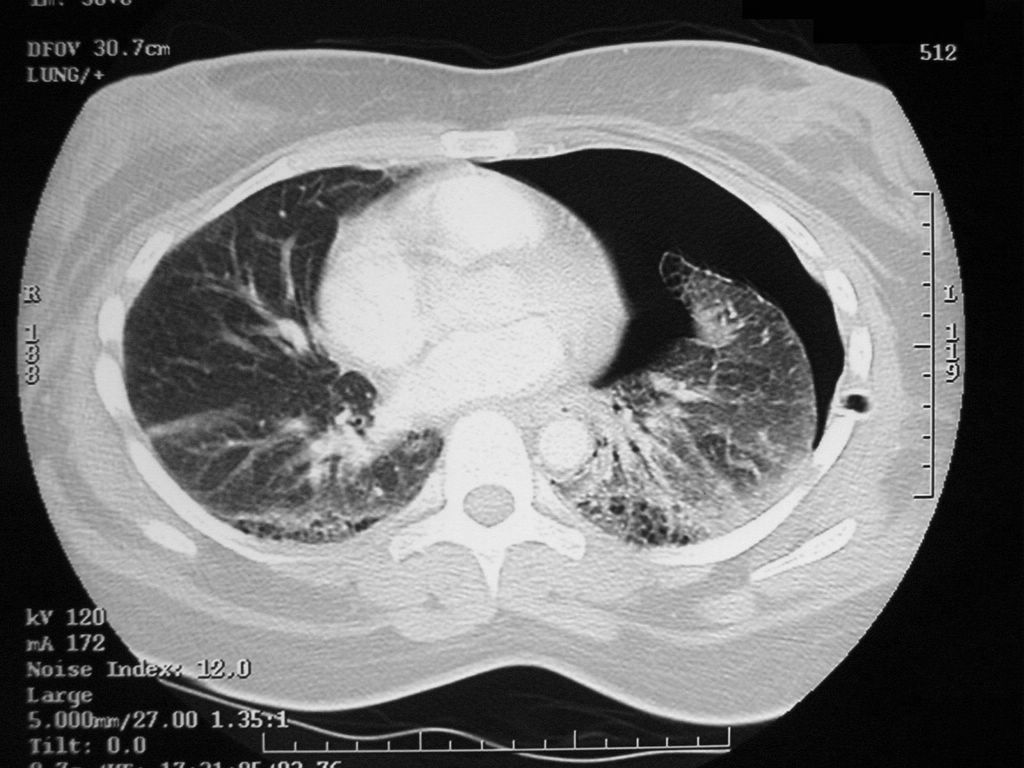Pulmonary laceration CT
|
Pulmonary laceration Microchapters |
|
Diagnosis |
|---|
|
Treatment |
|
Case Studies |
|
Pulmonary laceration CT On the Web |
|
American Roentgen Ray Society Images of Pulmonary laceration CT |
|
Risk calculators and risk factors for Pulmonary laceration CT |
Please help WikiDoc by adding more content here. It's easy! Click here to learn about editing.
Editor-In-Chief: C. Michael Gibson, M.S., M.D. [1]
Overview
CT scanning is more sensitive and better at detecting pulmonary laceration than X-rays are,[1] and often reveals multiple lacerations in cases where chest X-ray showed only a contusion. Before CT scanning was widely available, pulmonary laceration was considered unusual because it was not common to find with X-ray alone. On a CT scan, pulmonary lacerations show up in a contused area of the lung,[2] typically appearing as cavities filled with air or fluid[3] that usually have an elliptical or ovoid shape. The roundness of the cavity is due to the elasticity of the lung.
CT

References
- ↑
Costantino M, Gosselin MV, Primack SL (2006). "The ABC's of thoracic trauma imaging". Seminars in Roentgenology. 41 (3): 209–225. doi:10.1053/j.ro.2006.05.005. PMID 16849051. Unknown parameter
|month=ignored (help) - ↑ Hopkins RL, Peden C, Ghandi S (2008). "Trauma radiology". Radiology for Anaesthesia and Intensive Care. Cambridge, UK: Cambridge University Press. p. 135. ISBN 0-521-69485-X.
- ↑ Donnelly LF (2002). "CT of Acute pulmonary infection/trauma". In Strife JL, Lucaya J. Pediatric Chest Imaging: Chest Imaging in Infants and Children. Berlin: Springer. p. 123. ISBN 3-540-43557-3. Retrieved 2008-05-01.